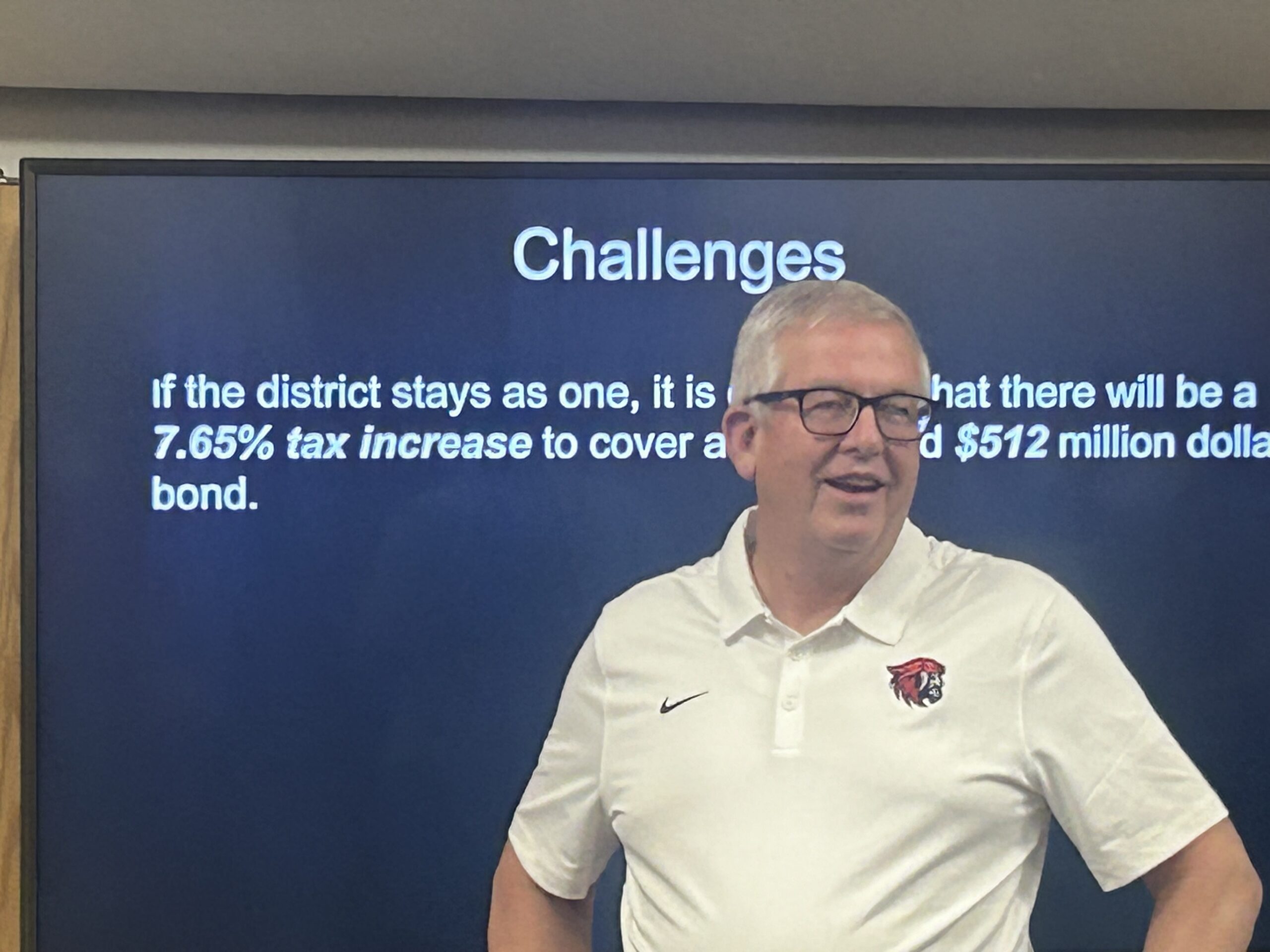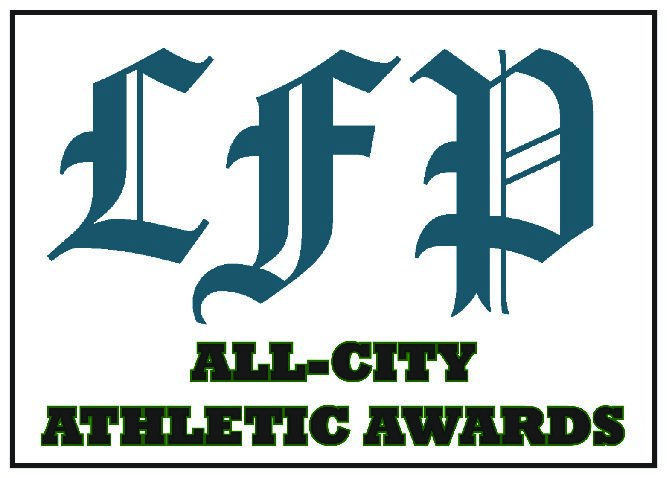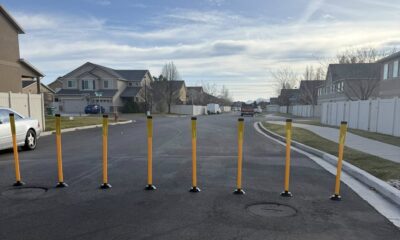Connect with us
Published
1 year agoon

Megan Wallgren | Lehi Free Press
Alpine District School (ASD) Board members Sarah Beeson and Mark Clement, who represent Highland, American Fork, and Pleasant Grove clusters, hosted an informational meeting about the potential ASD reconfiguration on Monday, September 23, at the American Fork Library. Around 40 people attended the public event centered around the possibility of a district split. Many of those in attendance were city council members from cities in the proposed Central and West districts who have voted in favor of interlocal agreements supporting a split.
Clement presented a timeline for split considerations that began in August 2023, when the district hired MGT Consulting to conduct a study on district reconfiguration, and ended in April 2024, when most of the cities within Alpine School District signed interlocal agreements stating their desire to form new, smaller school districts.
Going into the reconfiguration study, Beeson and Clement said the school board felt three criteria would justify a split: a decline in academic results, a decline in economic strength and financial position, and a decline in community engagement.
The only criteria Beeson and Clement felt had been met was the third. “If you looked at the survey we did, over 10,000 people, it was clear people wanted it on the ballot, even though most of them may not have wanted [to split],” said Clement, who represents the American Fork and Pleasant Grove High School clusters.
To support his view that the first two criteria for a split have not been met, Clement pointed to Alpine District standardized test scores, which are in line with those in other districts. “You’d be hard-pressed to say that Alpine is declining in our academic scores,” he said.
For the second criterion, Clement said ASD has very low administrative costs per student and spends among the highest percent (compared to other districts) of its general fund on instructional services. He said the district also has the highest credit rating available for public entities, which will result in lower interest rates on bonds. He claimed those financial benefits would not be available to smaller districts.
Beeson and Clement also argued any split would include tax increases. Clement pointed to the Jordan and Canyons school district split as an example of how property tax increased in both districts. However, they agreed that exact numbers would be difficult to predict because those things would be determined by the new school board and superintendents of any district formed.
Many of those in attendance felt representation was the real issue driving the split. More than one audience member cited the failed 2022 ASD bond that would have paid for a new high school on the district’s west side as an indication of representation problems within the district.
Briawna Hugh, an ASD teacher who has seen overcrowding in communities like Lehi, Saratoga Springs, and Eagle Mountain, said, “We’re not under the impression that everything we want will magically be fixed. What will be fixed is representation to prioritize what’s important to your community and how best to meet its needs. The reality is the needs are very different in different parts of the district.”
Lehi city councilman Chris Condie said, “The board is trying to meet the needs of the conditions of each city, and you can’t do that. It’s impossible.”
While Clement said he understands the desire for more representation, he urged citizens to focus on educational outcomes. “I understand there are advantages in having more representation for particular parts of the district,” he said. “I think maybe the decision for voters is what do I really prioritize…I think the one that I would encourage you to think about is which configuration is going to be best in terms of education.”
Beeson said, “One thing that I’ve always said that’s been a concern for me from the get-go is making sure that this is coming from the bottom up and not the top down…When you have cities going in and doing the interlocals, I’ve said please poll your public… I’m feeling like this is top down and not bottom up.”
“My concern is that I trust my principals. I trust my teachers. They are the ones on the ground level, seeing the good, bad, and ugly. When I hear from schools in my area that not one city council member has gone to my school to visit, that gives me pause,” she said.
City leaders in attendance rejected Beeson’s assertion that this was a “top-down” decision, saying they have polled their residents, talked to parents and teachers, and acted on what voters wanted. American Fork City Council member Ernie John said, “parents who talked to me about it [the desire for a choice to split] was probably 60/40 that wanted it on the ballot.”
Council members also denied that they haven’t been in classrooms. “I go in the classrooms at least every two months,” said Eagle Mountain city council member Jared Gray.
Cedar Hills city council member Kelly Smith said she has been asking since April to meet with teachers and administrators at schools in her city but has been told the district wouldn’t allow it. Many city leaders have also observed what has been going on in schools through the experiences of family members and neighbors.
Gray and other audience members pointed to instances of students sitting on school floors or not having enough materials in west-side schools as supporting the need for a split. Gray said school and district leaders didn’t believe there was a computer class with 46 students but only 40 computers. “They continued to argue with me and say that’s not right until the teacher spoke up and said there were 46 students and only 40 computers, and he just hoped someone was absent,” he said.
The proposed new high school for the district’s west side was a point of contention at the meeting. While Clement said the board is committed to building a school there, he admitted that the support may be in jeopardy.
“If I’m threatened that we’re not going to do that if you split off, you’re holding our kids hostage. We’re at your mercy. That’s it,” said Gray.
One Lehi resident who identified himself only by his first name, ‘Res,’ said, “The fact that every single interlocal was passed unanimously indicates that the city councils have the pulse of their tax-paying residents. That’s bottom-up, not top-down. Parents want a split, and if you truly cared about the students, you would listen to what the parents want.”



Pioneer girls drop three to tough teams in hoops


Give a piece of Lehi from the Lehi Historical Society gift shop


Students, Jazz Bear team up for annual holiday shopping event


The Ruth’s “Charlie and the Chocolate Factory” a whimsical treat


Lehi Free Press


UCHD confirms new measles case in Utah County


Barriers near 2100 West cause confusion for Lehi residents


Lehi to host national hoops showcase


Pioneer boys begin with tough schedule


Falcon boys make promising start
